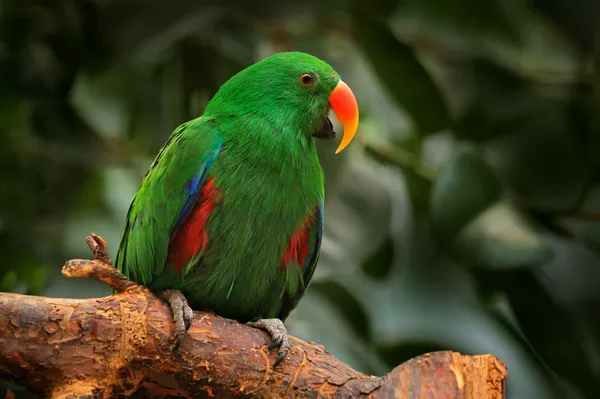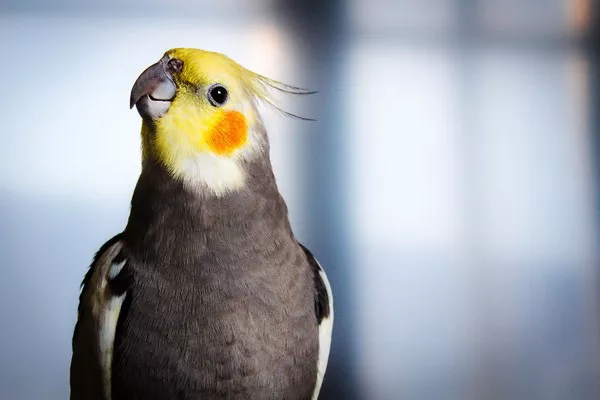Sun conures and cockatiels are two popular species of pet birds, each beloved for their unique personalities, beautiful plumage, and engaging behaviors. As pet owners, it’s not uncommon to wonder whether different species of birds can coexist peacefully in the same home, particularly when considering a sun conure and a cockatiel. While both species make fantastic pets individually, the question of whether they can live together harmoniously is important for ensuring their well-being and minimizing stress.
In this article, we’ll explore the temperaments, behaviors, and care requirements of sun conures and cockatiels, and provide insight into whether these two birds can live together under the same roof. Understanding their natural behaviors and how to manage their relationship will help you create a healthy, safe environment for both species.
Understanding Sun Conures
Sun conures (Aratinga solstitialis) are medium-sized parrots native to northeastern South America. Known for their vibrant plumage that includes shades of yellow, orange, and green, sun conures are a striking species with highly social and energetic personalities.
Temperament and Behavior
Sun conures are famous for being affectionate and playful with their human owners. They often bond closely with their caregivers, which can make them very loving and demanding pets. However, they are also known for being a bit noisy. Their loud, shrill calls are used to communicate in the wild and can sometimes be overwhelming in a home setting. This is something to consider if you have close neighbors or if you prefer a quieter household.
Sun conures are also very active birds and require plenty of mental and physical stimulation. They enjoy exploring, chewing, and interacting with toys and objects. Their playful nature can sometimes lead to mischief, so ensuring they have plenty of space and things to do is key to their happiness.
Social Needs
Being highly social animals, sun conures typically thrive in environments where they receive plenty of attention. Without enough interaction, they may become bored, which can lead to destructive behavior or, in some cases, depression. When it comes to cohabitation, sun conures do best with other birds of similar size and personality, although their extroverted nature can sometimes lead to tension with more reserved species.
Understanding Cockatiels
Cockatiels (Nymphicus hollandicus) are a small species of parrot native to Australia. They are known for their charming personalities, intelligence, and distinctive crests on their heads. Cockatiels come in various colors, with the most common being a gray body and yellow face.
Temperament and Behavior
Cockatiels are generally gentle, affectionate, and calm birds. They tend to be more laid-back compared to the sun conure, which can make them more adaptable to living with other pets, including other birds. Cockatiels are known for their friendly disposition, and many cockatiels enjoy spending time with their human caregivers, following them around and perching on their shoulders. They also love to sing, whistling or mimicking sounds, but their vocalizations are not as loud or shrill as those of sun conures, making them less likely to be disruptive.
Like sun conures, cockatiels are social animals that thrive on companionship. They are intelligent and enjoy mental stimulation, but their energy levels are not as intense as those of a sun conure. Cockatiels tend to be less demanding when it comes to attention, but they still need daily interaction and enrichment to stay happy and healthy.
Social Needs
While cockatiels are known for getting along well with other species of birds, they tend to be more laid-back and may not engage as actively with other birds as sun conures. They can bond with both humans and other birds, though their calm demeanor can sometimes be seen as less compatible with the high-energy nature of other species.
Can a Sun Conure and Cockatiel Live Together?
Now that we’ve covered the individual temperaments and behaviors of both sun conures and cockatiels, the next question is whether these two species can coexist peacefully in the same household. The answer depends on a variety of factors, including the individual birds’ personalities, the living environment, and how well their interactions are managed.
1. Temperament Differences
The most significant difference between sun conures and cockatiels is their temperament. Sun conures are active, noisy, and demand a lot of attention. Their high energy levels and loud vocalizations may be overwhelming for a more calm and reserved cockatiel. However, because cockatiels are generally friendly and calm, they may tolerate the more outgoing nature of a sun conure, especially if they are introduced gradually and carefully.
If you’re thinking about having both species in the same space, it’s important to be aware of these differences and understand that the sun conure’s boisterous behavior may stress out the more passive cockatiel. If the cockatiel becomes overwhelmed or stressed, it could lead to behavioral problems, such as plucking feathers or becoming reclusive.
2. Space and Territory
Space is another crucial factor when housing both species together. Both sun conures and cockatiels need their own space to feel safe and secure. Sun conures are territorial birds, and they may become aggressive if they feel their space is being encroached upon by another bird. On the other hand, cockatiels are more tolerant of sharing space but still need their own personal area to retreat to when they feel threatened or overwhelmed.
To reduce territorial disputes, it is best to provide each bird with its own cage and ensure that both cages are placed far enough apart to avoid unnecessary tension. If you allow the birds to interact outside their cages, supervise their interactions closely, especially in the beginning. Over time, with proper training and socialization, they may become more comfortable with each other.
3. Vocalization and Noise Levels
As mentioned, sun conures are known for their loud, shrill calls, while cockatiels tend to have softer, more melodic sounds. If you have both a sun conure and a cockatiel in your home, it’s important to consider how their vocalizations might impact your living environment. Sun conures are loud, and their calls can sometimes cause stress or anxiety for other birds.
Cockatiels are typically more tolerant of noise, but a sun conure’s screeching could make them feel anxious, especially if they are not used to such loud sounds. If noise is a concern, you might want to keep their cages in separate rooms or at a distance from each other to reduce stress. Some bird owners have successfully kept these two species together by ensuring their living arrangements allow each bird to feel safe and unbothered by the other’s vocalizations.
4. Socialization and Bonding
While both sun conures and cockatiels are social birds, they require different levels of attention and interaction. A sun conure may demand more one-on-one time, while a cockatiel may be content with less frequent attention. This difference in social needs can create tension if the birds are competing for attention, especially if one bird feels neglected.
One way to manage this is by ensuring that both birds receive equal amounts of attention and care from their owners. Rotate their time out of their cages, and make sure each bird has its own designated playtime and training sessions. If you’re introducing the birds to each other, allow them to interact slowly and gradually. This will help both birds feel secure and avoid any potential conflicts.
5. Health and Well-being
Ensuring the health and well-being of both species is another critical factor to consider. Sun conures and cockatiels have different dietary needs, and their health can be affected by stress, poor nutrition, or lack of proper care. If you house both species together, make sure each bird is provided with a balanced diet that meets its specific nutritional requirements. For instance, sun conures need a diet rich in fruits, vegetables, and high-quality pellets, while cockatiels benefit from seeds, fruits, vegetables, and occasional treats.
Additionally, stress can have a negative impact on a bird’s health, leading to issues such as feather plucking, a weakened immune system, or digestive problems. Monitoring the birds for signs of stress and addressing any issues immediately is key to ensuring their health and happiness.
Tips for Successfully Housing a Sun Conure and Cockatiel Together
If you decide to house a sun conure and a cockatiel together, there are several things you can do to help them live peacefully:
Provide Separate Cages: Each bird should have its own cage, which should be large enough to allow for movement and comfort. Place the cages far enough apart to prevent territorial disputes.
Supervise Interactions: In the beginning, closely supervise all interactions between the birds. Allow them to get used to each other’s presence before allowing unsupervised time together.
Equal Attention: Make sure both birds receive individual attention, training, and interaction from you to prevent jealousy or competition.
Space to Escape: Make sure both birds have access to quiet areas where they can retreat if they feel overwhelmed or need some alone time.
Monitor Health: Keep an eye on both birds’ health and behavior, and ensure they are not exhibiting signs of stress or aggression.
Allow Time to Adjust: Introducing two species takes time, so be patient. It may take weeks or even months before they feel comfortable with each other.
Conclusion
In conclusion, while it’s possible for a sun conure and a cockatiel to live together, it requires careful consideration and management of their individual needs and temperaments. These two species have distinct personalities, so understanding their differences is essential for creating a harmonious living environment. By providing each bird with sufficient space, attention, and a peaceful atmosphere, you can help foster a positive relationship between them.
If done thoughtfully, having a sun conure and a cockatiel living together can be a rewarding experience. However, it’s crucial to remember that every bird is unique, and some may be more inclined to tolerate or bond with other species than others. By being attentive to their needs and understanding their behaviors, you can ensure that both birds thrive in your care.
Related Topics:






















